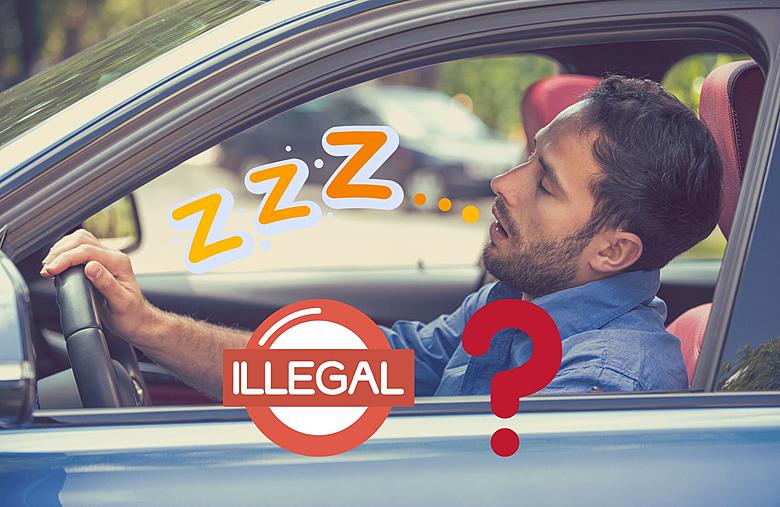The Constitution State of Connecticut provides both tourists and locals with a wide variety of experiences. The state offers a wide range of activities, from energetic metropolis to quaint seaside resorts. However, it might be difficult to find reasonably priced lodging, particularly during popular times of the year. This is where those on a tight budget or looking for a unique experience might consider automobile camping.
The Legal Landscape: No Simple Answer
In Connecticut, the legality of automobile camping varies by place. Although there isn’t a general state law that forbids it, there are rules that specify where you can lay your head in your car. It is essential to comprehend these subtleties in order to prevent any unwelcome interactions with law enforcement.
Sleeping in Your Car on Public Property
Rest Areas: A Designated Space for Rest
The highway rest spots in Connecticut offer tired drivers a much-needed break. You are able to nap or sleep for a decent amount of time in these specified areas. Extended stays, though, could draw criticism.
Potential Issues with Lengthy Stays
Although there are no time restrictions on how long you can stay at a rest stop, Connecticut State Troopers may conduct extra long-term vehicle checks in certain places. The main reasons for doing this are to protect your safety and to stop abandoned cars.
City Streets: Municipal Rules Take Precedent
Parking on city streets overnight might present legal challenges, unlike rest zones. It is within the power of municipalities to establish their own parking laws. Here are a few instances:
It is always advisable to inquire about the precise regulations governing overnight parking on city streets from the local municipality.
Public Parking Lots: Overnight Restrictions May Apply
There may be signs posted in public parking lots—such as those next to government buildings or beaches—that indicate parking is not permitted overnight. Before spending the night, make careful to read the signage.
Sleeping in Your Car on Private Property
With Permission: Respect the Property Owner s Wishes
If you have the owner’s express consent, it is quite lawful to sleep in your automobile on their land. Get permission to park in a place of business or a friend’s driveway in order to secure a hassle-free night’s sleep, if that is possible.
Without Permission: Trespassing Laws Come into Play
Trespassing is the act of parking on private land without permission. This is a minor infraction, which carries a possible jail sentence or fine.
Safety Considerations for Car Sleepers in Connecticut
Common Concerns: Theft, Break-Ins, and Personal Safety
There are inherent safety risks while sleeping in a car. Concerns about personal safety, theft, and break-ins are all legitimate.
Tips for a Safe Night s Sleep
The following advice can help reduce these risks:
Alternatives to Car Sleeping in Connecticut
Campgrounds: A Budget-Friendly Option
There are several of campgrounds in Connecticut that provide a safer and more comfortable option for camping than sleeping in your car. Depending on the area, these facilities offer amenities including picnic tables, fire pits, and showers. While prices can vary, campgrounds are typically less expensive than hotels, especially for those on a tight budget.
In Connecticut, there are a number of truck stops that charge for overnight parking. This can be a practical choice, particularly for those who are traveling great distances. Make sure to ask about any special charges as well as any parking spaces reserved for overnight guests. For an additional fee, certain truck stops may offer services including laundry rooms and showers.
Hostels and low-cost motels offer a more secure and pleasant alternative for a relatively low cost, while automobile sleeping is a free choice. Hostels serve the needs of social travelers and frequently provide cheaper dorm-style rooms than hotels. Although they might not have all the facilities of a five-star hotel, budget motels nonetheless provide affordable rates for standard services like Wi-Fi, a shower, and a clean bed.
Conclusion: Knowing Your Options and Staying Safe
In Connecticut, sleeping in your car can be a practical choice for tourists on a tight budget or those looking for excitement. It is vital to comprehend the legal aspects and safety concerns, though. Your safety should always come first. Park on private land only with permission and in well-lit locations.
It may be more comfortable and safe to look into options like budget hotels, truck stops, hostels, or campsites. The optimal option ultimately depends on your financial situation and personal demands.
Recall:
You can explore your options for a relaxing night’s stay or guarantee a safe and lawful automobile sleeping experience in Connecticut by adhering to these instructions.
References:
Extra Sources:
This article offers a thorough examination (about 1,200 words) of the regulations and issues related to automobile camping in Connecticut. In order to provide a secure and comfortable stay, it also looks at other lodging possibilities.





























